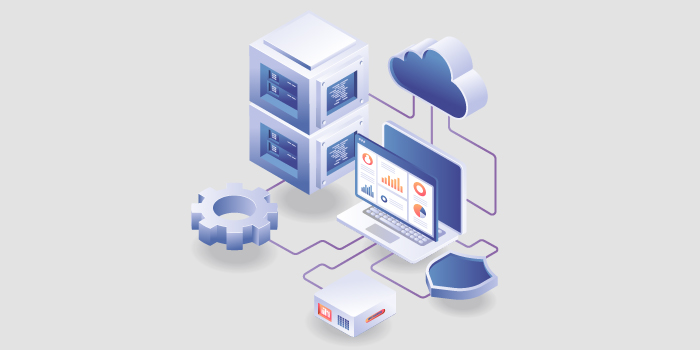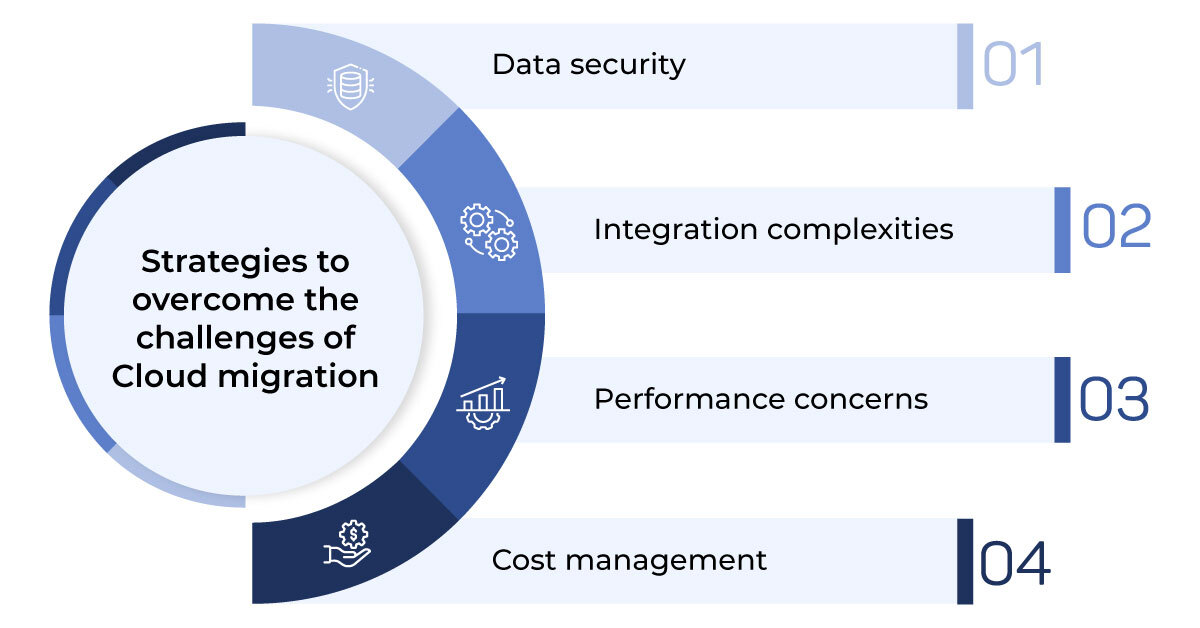Table of Content
TABLE OF CONTENTS

Cloud adoption is on an upward trajectory, as recent studies reveal a significant number of businesses integrating Cloud computing into their IT enterprise strategy, either fully or partially. Notably, Gartner's projection asserts that by 2025, a substantial 85% of businesses will prioritize a Cloud-first approach. While Cloud adoption methods vary, prevailing trends indicate a growing preference for hybrid Cloud strategies.
Cloud Data Warehouses are increasingly significant in contemporary business landscapes, offering distinct advantages over traditional on-premises counterparts. Additionally, they exhibit scalability, enabling swift adjustments to accommodate changing requirements, while their flexibility simplifies the integration of new data sources and applications. Moreover, Cloud Data Warehouses are cost-effective and secure, leveraging protected data center environments. Their impact extends to business realms, facilitating informed decision-making through centralized data access and elevating operational efficiency via automation and insights. Businesses leveraging Cloud Data Warehouses gain a competitive edge by harnessing customer insights for strategic advantages.
As businesses transition to Cloud Data Warehouses for enhanced data management, several critical challenges must be addressed for a seamless adoption journey. To name a few:
- Attention to data security: While the Cloud offers global accessibility, data security becomes paramount. Concerns arise regarding unauthorized access to sensitive information, highlighting the need for robust security measures.
- Navigating integration complexities: Integrating Cloud Data Warehouses with existing systems poses complexities. A comprehensive understanding of the Cloud Data Warehouse and current systems demands meticulous technical knowledge
- Optimizing performance: Storing and processing substantial data volumes can strain Cloud Data Warehouse performance, especially without proper configuration. Ensuring optimal performance becomes a priority.
- Strategic cost management: Pay-as-you-go billing necessitates prudent usage management to avoid undue expenses, demanding vigilant cost oversight.
.png?width=819&height=250&name=Cloud-Data-Warehouse%20(2).png)
There are further challenges that businesses should take note of:
- Expertise gap: Implementation and management expertise for Cloud Data Warehouses may be limited within the organization, necessitating skill development.
- Vendor lock-in concerns: Opting for a vendor could result in being locked into their services, posing difficulties for future migrations. Making a prudent choice is of utmost importance.
- Navigating compliance: Adhering to regulations like GDPR can be intricate and time-consuming, adding a layer of complexity to the adoption process.
To conquer these hurdles, meticulous planning and implementing a robust Cloud Data Warehouse strategy are integral. Selecting a provider offering security, scalability, and flexibility is vital. By addressing these challenges head-on, businesses can unlock the full potential of Cloud data warehousing.
With Mastech InfoTrellis leading the charge, we take pride that businesses can effectively gain access to dynamic Cloud solutions and intelligent data warehousing tailored for diverse needs. Leveraging innovative technology, we empower enterprises of different industries with seamless scalability, real-time insights, and fortified security measures. Through our visionary approach, Mastech InfoTrellis revolutionizes how enterprises wield data, unleashing unparalleled insights and steering businesses toward success.
Challenges in Cloud Data Warehouse adoption: Impacts and solutions
Cloud Data Warehouse adoption brings transformative potential, but critical challenges can hinder growth and efficiency. Here are some ways that these hurdles can hinder business progress:
- Data security challenges: In the age of relentless cyber threats, inadequate data security measures not only jeopardize sensitive information but also open the door to potential financial losses, irreparable reputational damage, and severe compliance violations. Staying vigilant against unauthorized access is paramount to safeguarding the integrity of your business's digital assets and ensuring long-term viability in today's security-conscious landscape.
- Integration complexities challenges: Poor integration leads to data silos, obstructing a comprehensive view, resulting in fragmented information landscapes that hamper swift decision-making and operational efficiency. This delay in accessing critical insights can hinder progress and strategic initiatives, highlighting the need for seamless integration solutions that bridge gaps and ensure coherent data flow throughout the organizational ecosystem.
- Performance challenges: The importance of proper configuration cannot be overstated. Inadequate setup can result in sluggish query responses, hampering user experience and impeding the timely acquisition of crucial insights required for informed decision-making.
- Cost management challenges: Mismanagement results in unnecessary costs, affecting profitability and investment justification. Navigating the intricacies of Cloud expenditure demands vigilant oversight, meticulous resource allocation, and leveraging advanced cost analysis tools. Fostering a culture of financial prudence ensures optimal resource utilization, safeguards budgetary constraints, and fortifies the foundation of sustainable growth.
These challenges can be impactful on business growth and efficiency – how?
- Data security breach: Loss of customer data damages reputation and trust, leading to customer attrition.
- Integration delays: Delayed insights impede timely decisions, affecting agility and competitive advantage.
- Performance frustration: Slow response times frustrate users, diminishing productivity and impeding operational flow.
- Cost overruns: Excessive spending on Cloud data warehousing impacts profitability and financial health.
Strategies to overcome the challenges of Cloud migration
To address the challenges of Cloud migration, tactfully manage them through practical steps. Here are a few strategies to effectively overcome the challenges and welcome Digital Transformation:

- Data security: Employ robust encryption algorithms to fortify data against unauthorized access, ensuring confidentiality and integrity. Implement rigorous access controls, limiting data exposure only to authorized personnel on a need-to-know basis. Vigorously adhere to stringent regulatory mandates, assuring compliance and instilling stakeholder trust.
- Integration complexities: The gap between Cloud Data Warehouses and existing systems is effectively bridged by harnessing the power of Application Programming Interfaces (APIs) and sophisticated middleware solutions. This strategic integration guarantees a seamless and unified data flow, eradicating bottlenecks and elevating operational efficiency.
- Performance concerns: Enhance the performance of your Cloud Data Warehouse through strategic resource and query optimization. Allocate resources with precision to match demand, all while refining queries to achieve efficient data retrieval and analysis. By adopting this strategy, you can ensure smooth operations and swift insights, thereby maximizing the capabilities of your Cloud Data Warehouse infrastructure.
- Cost management: Embrace Cloud cost analysis tools to meticulously track and optimize spending, ensuring each investment aligns with strategic objectives. Leverage resource scaling to seamlessly adjust capacity, preventing wastage and ensuring cost-efficiency remains paramount throughout your Cloud journey.
A holistic Cloud migration strategy tailored to an organization's unique needs is critical:
- Factor in data security, integration requirements, performance goals, and cost limitations.
- Garner stakeholder buy-in for seamless collaboration and understanding of migration nuances.
- Start with smaller projects, gradually expanding as confidence grows.
- Rigorously test and monitor the migration process to identify and address issues.
- Consider partnering with experts if in-house resources are limited.
By focusing on these factors, businesses can triumph over Cloud migration challenges, unlocking the potential of this technology to drive growth and efficiency.
Emerging trends in Cloud Data Warehousing
In the rapidly evolving landscape of Cloud data warehousing, staying informed about emerging technologies and trends is pivotal. Here are key trends shaping the future of Cloud data warehousing:
- Artificial Intelligence (AI) and Machine Learning (ML): Automating tasks like data cleaning and deriving new insights for fraud detection and customer segmentation, enhancing efficiency and decision-making.
- Serverless computing: Simplifies operations as Cloud providers manage servers, reducing business costs and complexity.
- Edge computing: Processing data closer to its source boosts performance and minimizes latency, enhancing real-time capabilities.
- Hybrid Cloud: Balancing public and private Clouds offers scalability and security benefits, ensuring businesses get the best of both worlds.
- Multi-Cloud: Utilizing multiple Cloud providers avoids vendor lock-in, leveraging the strengths of various platforms.
Being attuned to these trends equips businesses to adapt, strategize, and leverage advancements effectively. Awareness of AI/ML integration allows for proactive planning, understanding serverless computing drives cost-efficiency, and recognizing edge computing's potential boosts application performance.
Conclusion
In response to evolving dynamics, the Cloud landscape demands scrutiny as energy cost spikes compel public Cloud providers to raise rates. Amidst apprehensions regarding data control and more, businesses are contemplating diverse paths. While the public Cloud maintains dominance, pragmatic considerations call for exploration beyond. Two notable routes emerge: Cloud repatriation and hybrid Cloud adoption.
Cloud repatriation involves shifting workloads from public domains to private Clouds or other settings. A recent survey disclosed that 48% of surveyed IT decision-makers migrated apps or workloads from public Clouds.
Alternatively, a Hybrid Cloud model garners attention, offering heightened data control. In a recent Cloud user survey, 89% reported adopting a multi-Cloud strategy, with 80% embracing a hybrid approach - integrating public and private Clouds.
Businesses must weigh these options judiciously to align with their unique needs and priorities, navigating a Cloud landscape with choices. Mastech InfoTrellis excels in delivering impactful Cloud and intelligent data warehousing solutions. Empowering businesses with robust, adaptable architectures, we harness transformative technologies for unparalleled data optimization. Our expertise spans industries, providing bespoke solutions that amplify operational prowess. From dynamic Cloud integration to intricate data management, we engineer solutions that redefine business capabilities.
Data Management Team
The experts behind your data success, our data management team is the driving force behind precision, accuracy, and data-driven insights to drive your business forward.



